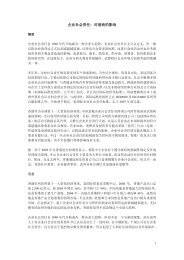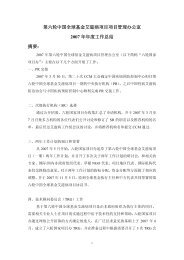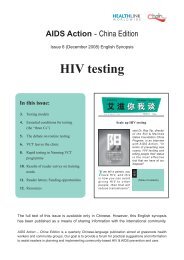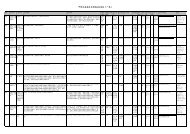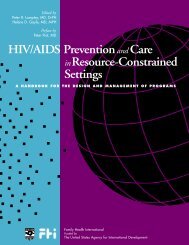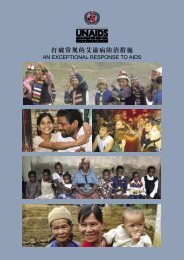The Training of Trainers Manual - UNFPA
The Training of Trainers Manual - UNFPA
The Training of Trainers Manual - UNFPA
Create successful ePaper yourself
Turn your PDF publications into a flip-book with our unique Google optimized e-Paper software.
Handout 6 • Sex and Gender 6<br />
Sex refers to the biological differences between males and females. <strong>The</strong>se differences are concerned<br />
with physiology and are generally permanent and universal. Sex identifies a person as male or female:<br />
type <strong>of</strong> genital organs (penis, testicles, vagina, womb); type <strong>of</strong> predominant hormones circulating in the<br />
body (estrogens, testosterone); ability to produce sperm or ova (eggs); ability to give birth and breastfeed<br />
children.<br />
Gender refers to the socially constructed roles, responsibilities, and expectations <strong>of</strong> males and females in<br />
a given culture or society. <strong>The</strong>se roles, responsibilities, and expectations are learned from family, friends,<br />
communities, opinion leaders, religious institutions, schools, the workplace, advertising, and<br />
the media. <strong>The</strong>y are also influenced by custom, law, class, ethnicity, and individual or institutional<br />
bias. <strong>The</strong> definitions <strong>of</strong> what it means to be female or male are learned, vary among cultures, and<br />
change over time.<br />
If anyone asks about dictionary definitions <strong>of</strong> sex and gender, point out that dictionary definitions tend<br />
to define sex and gender in a similar way, but that in peer education training, we use a social-science<br />
definition <strong>of</strong> the term ‘gender’.<br />
Section 4. Participant Handouts<br />
143




